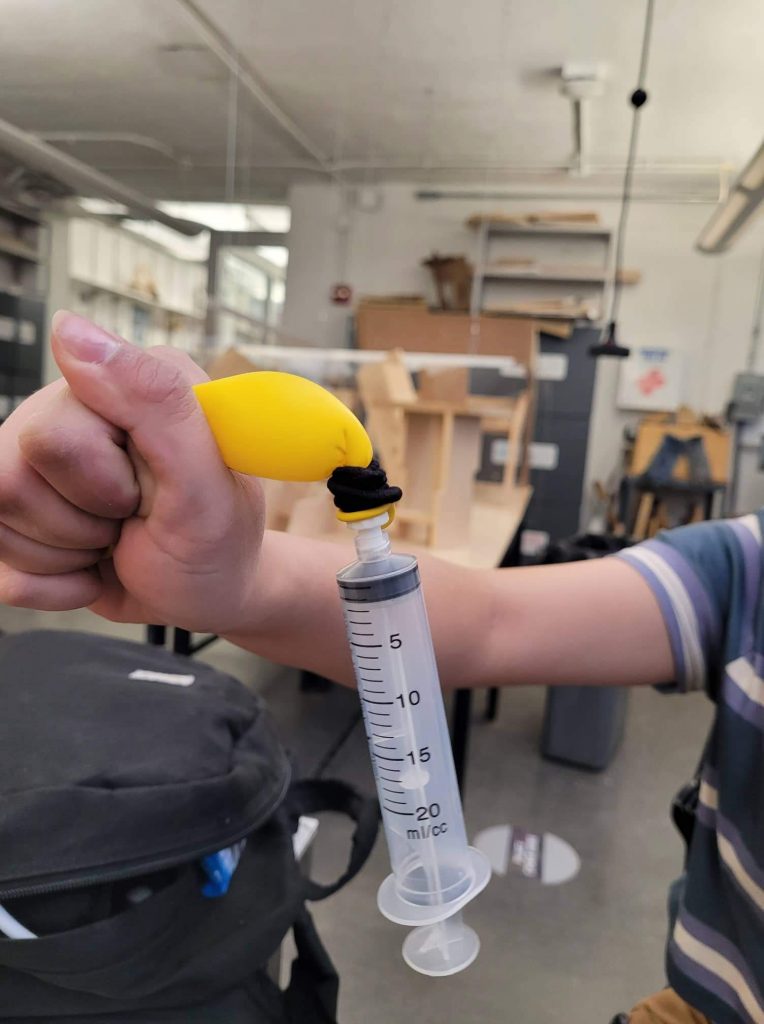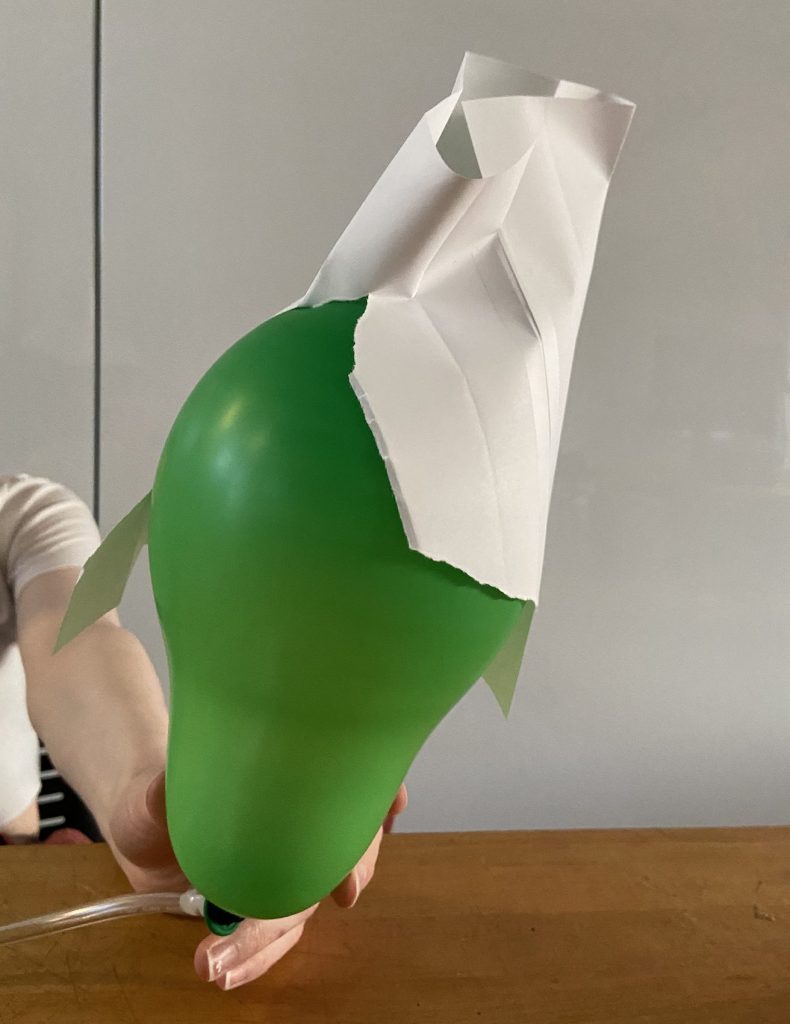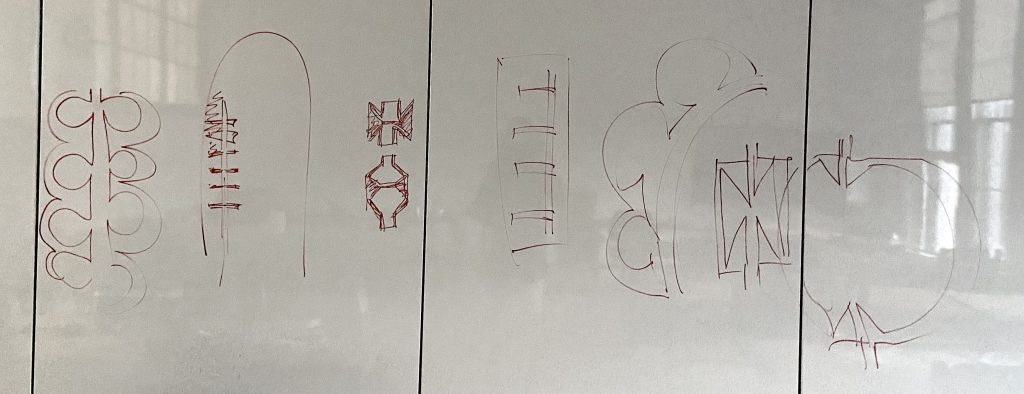Last week we began exploring with balloons test out using syringes to control inflatables and to experiment with the different types of movement we could achieve with the inflatable actuators. We were able to produce a couple different semi-functional devices: a two-balloon actuator that could change the angle of a piece of cardboard, a three-balloon actuator that could manipulate a cardboard platform (this one far more successful than the previous one), and a balloon-actuated Lego claw. While these worked, the 20ml syringes we were using created a pretty underwhelming degree of motion.

This week we upgraded the size of our syringe to 100ml, and experimented with medical pumps. The former, expectedly, produced a much larger result in the balloon, although the result was still slightly underwhelming. Perhaps moving down to a Lego scale, rather than focusing so heavily on a vague balloon scale, might make these syringes seem more impressive. The heart pumps provided an interesting tradeoff: while we were able to fill up balloons with an indefinite amount of air, filling the balloon required more time an effort, and deflating the balloon was a rough, hard to control process. The syringes appeared to be the superior option given the amount of control we can achieve both while inflating and deflating the balloon.
We tried to replicated a couple of our explorations from last week with the larger balloon, particularly the three-balloon platform. This new prototype was actually considerably less successful than the smaller one, and we concluded this was likely due to a combination of three issues:
- Inflating the balloons with more air means the balloons get wider, pushing them further apart. This created stress that caused the balloons to break away from the tape.
- To compensate for the small capacity of the 20ml syringes, we tied all the balloons so that they could fill only to half capacity. This knot produced a loose, easily movable section at the top, which was attached to the platform. Without these tied off sections, the balloons attached to the larger syringe might have had a harder time sticking to the tape.
- Lastly, we used a different type of tape. The tape we used this time might have had an adhesive less adherent to latex.

This weekend, we also discussed some rough designs for our inflatable silicone pieces. We concluded that we wanted at least three different types of motion: increasing in length, increasing in width, and one that bends to one side when inflated. This would employ three different soft designs to accomplish these three objects, and some sort of clear design language to communicate the motion of each piece. There is obvious potential to increase to even more kinds of movement, but it seems that a couple simple motions would be a good place to start as we figure out the workflow of creating these objects and also develop the interfaces that allows these actuators to integrate with the Lego System.
